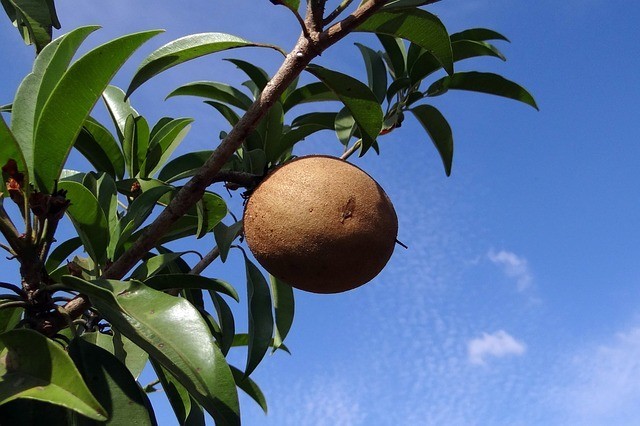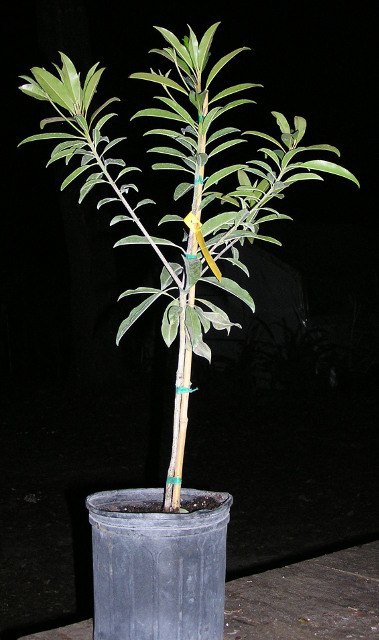Sapodilla (Manilkara zapota)
aka Siamese Persimmon, Sa pô chê or sapota, 'chiku' or 'chicozapote'
Sapodilla is a long-lived evergreen tree native to southern Mexico, Central America and the Caribbean. It has been introduced to the Phillipines, India, Thailand, Malaysia, Vietnam, Cambodia, Indonesia and Bangladesh.
GROWTH
In its native environment, Sapodilla may grow to 98' tall w/ an average trunk diameter of 5'. But in cultivation in Florida, it grows to approx 30-49' w/ a max trunk diameter of 20".
It is a strong, wind resistent evergreen tree grown in tropical climates. The bark is rich with a white gummy latex called 'chicle'. Sapodilla must be kept from freezing to survive.
Young trees will be damaged at temperatures below freezing, but a more mature specimen can be cold tolerant to 26 degrees. Seems to also be tolerant of salt spray.
Leaves are oval or eliptical shaped, medium green and 3.5-7" long.
It has small, white, bell-shaped flowers that develop into a small light brown ellipsoid-shaped fruit, approx 2-4" in diameter, sometimes larger. Trees yield fruit twice a year, though it may continue flowering year around.
FRUIT
Sapodilla fruit has an exceptionally sweet, malty flavor. It contains 2-5 black seeds resembling beans w/ a hook at one end that can catch in the throat if swallowed.
Unripe fruit has a firm outer skin, is hard to the touch, and releases white chicle from the stem when picked.
It also contains high amounts of saponin, which has astringent properties similar to tannin, drying out the mouth. Fully ripe fruit has saggy skin and does not release chicle when picked.

OTHER NAMES:
It is known by many other names around the globe:
Siamese Persimmon, Sa pô chê or xa pô chê (Vietnam)
lamoot (Thailand, Laos)
mispel (Virgin Islands and Dutch Caribbean)
zapote (Honduras)
níspero (Dominican Republic, El Salvador, Costa Rica, Cuba, Guyana, Puerto Rico, Nicaragua, Panama, Colombia and Venezuela)
dilly (Bahamas)
naseberry (Jamaica and other parts of the Caribbean)
sapoti (Brazil and Haiti)
chico (Philippines)
chicosapote or chicozapote (Mexico, Hawaii, southern California and southern Florida.)
In India it is known as chikoo, chiku, and sapota; sobeda/sofeda in eastern India and Bangladesh, sapathilla (Sri Lanka), sabudheli in Maldives, sawo, saos, ciku, and sawo nilo in other parts of Asia.
In Chinese, the name is mistakenly translated by many people roughly as "ginseng fruit", though this is also the name used for the pepino, an unrelated fruit; it should instead be "heart fruit" because it is shaped like the heart.

3g sapodilla

sapodilla flowers


7g Silas Woods sapodiilla (dwarf)
